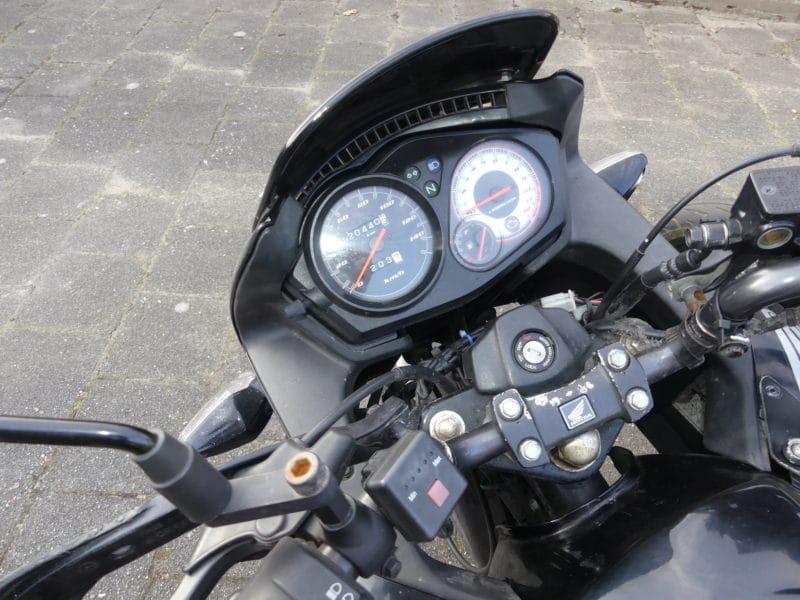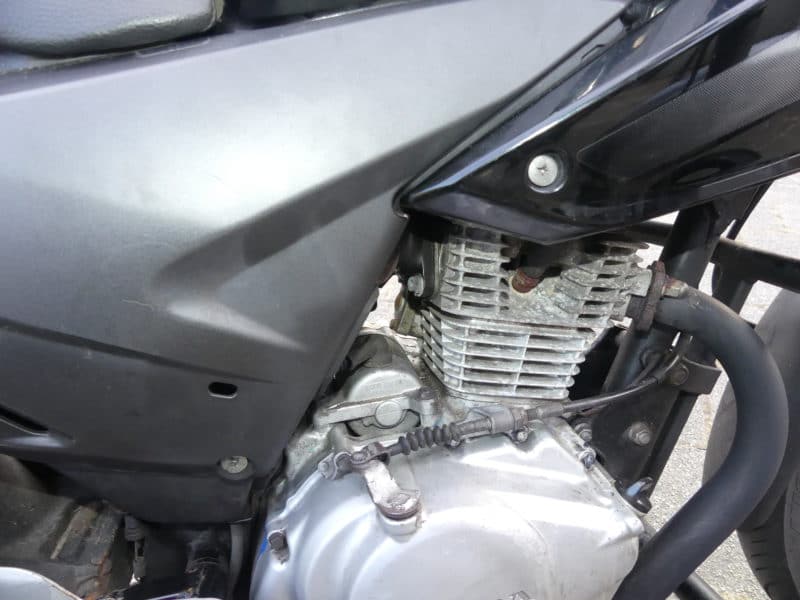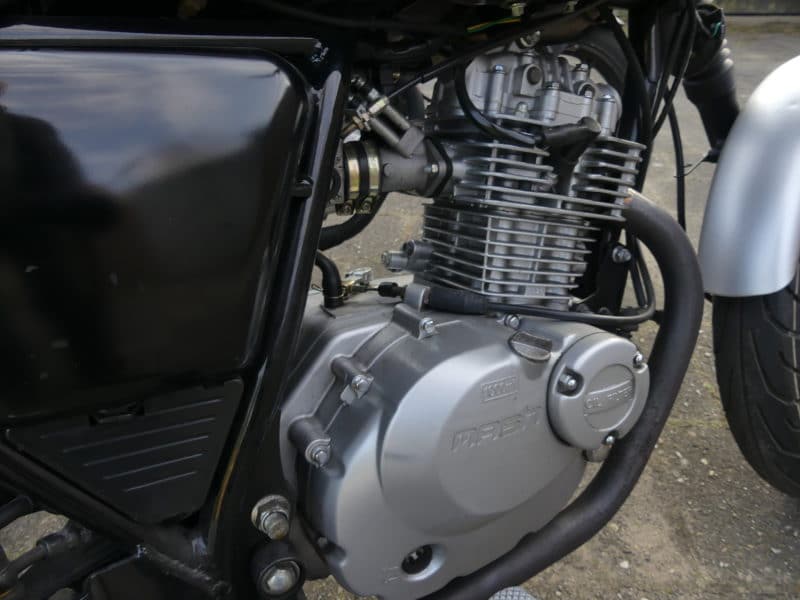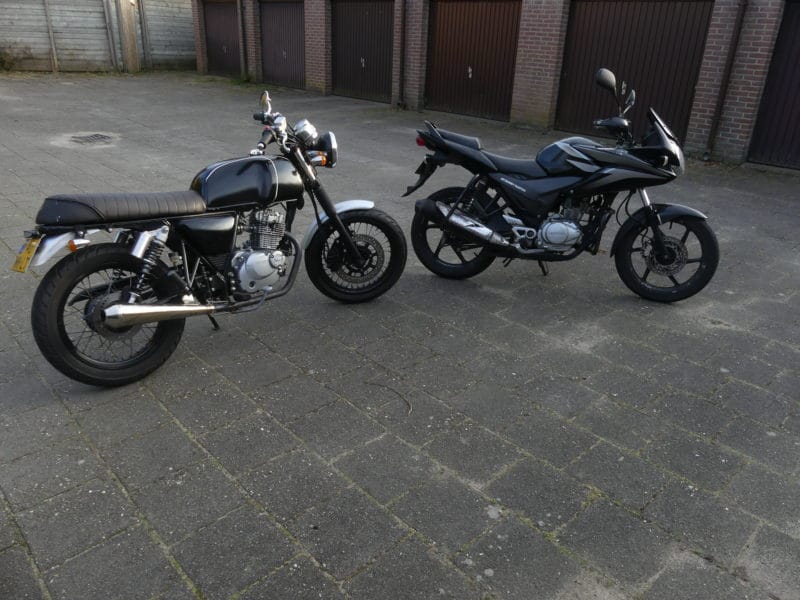In these strange times, nothing is certain anymore. Let alone that we know what will happen in 25 years. Maybe we'll celebrate the 24th anniversary of Putin's death. The Rutte 11 cabinet may also promise an even newer impetus. maybe Auto Motor Klassiek the only classic magazine that is still for sale separately, while the subscription costs are still incredibly low.
And maybe the 125 cc Honda CBF and the also 125 cc Mash from 2014 and 2017 are true classics. In any case, they are very frugal with that fossil fuel that is now called 'gasoline', but then simply called 'excise duty'. Let's go crazy. Let's look into the future.
Honda/Japan: Made in India (new price 2022: 3.350 old euros)
By 2015, motorcycles with electronically regulated 299 km/h speeds were on sale in Western Europe, Scandinavia, the United States and Canada. That was a pointless rearguard action in a world where 120 km/h was pretty much the highest speed allowed. Those machines were kept on the road by numerous electronic systems that not only monitored top speed but also limited power and torque in the first three gears. There was a revival of motorcycles that resembled the classic motorcycles of the 1970-1980s. But global engine production? It ran on cheap transport for the masses. The crowd was not overflowing with money. That is why Honda, once from Japan, had its 'little ones' made en masse in low-wage countries. This Honda CBF 125 is 'Made in India'. And you can see that – certainly now. Here, a bike like the CBF 125 was thought to win the hearts of a multitude of youthful motorcyclists. That target group did not exist. That is why these Hondaatjes are quite rare here.
Mash/France: Made in China (new price 2022: 3.199 old euros)
At the time, motorcycles from China were at the tipping point from 'suspicious' to 'the norm'. The quality requirements that the French manufacturer Mash set for its products – and that the Mash engines were emphatically marketed as a French product – helped a lot. Firstly, the Mash 125 is made to the dimensions of middle Europeans. The build quality is convincing and the heavily chromed metal fuel cap fits convincingly in the hand. What is typical of its time is that the single-cylinder under the Mash is an (injected) clone of the 125 cc Suzuki GN125 block from the eighties of the last century. On the outside, the Mash single-cylinder has withstood the years better than the Honda power source. But in its course, the Suzuki clone is a bit more primitive… more mechanical. On the outside, time has gnawed at the Honda's plastic parts (and the sparse chrome).
The Honda is more comfortable driving technically
Only the high ass makes getting on a bit more difficult for some. The simply classically styled Mash takes the points there. With the block high in the revs you can enjoy go-karting with the Mash. The suspension and damping are almost stiff. The combined braking system encourages rowdy driving.
In terms of top speed (about 100 km/h, but 80+ is better) these light motorcycles do not differ much. Motorways with their permitted top speed of 85 km/h are compatible for these machines. But on secondary roads they feel more comfortable. When it comes to fuel consumption, the Honda drinks almost 1 in 40. The Mash burns every liter over about 30 km.
Side by side we see the Honda as a cheap motorcycle that never made it 'with us', but was sold in mass worldwide. Because: light motorcycles were and are transport for the (Asian, Indian and African) masses. An entry-level model for local young motorcyclists at the time. That target group existed here only theoretically. The Honda cost serious money for what it was and the dreamed target audience had linked life to the smartphone.
With the 115 cc (in various versions) the now globally successful Mash put good and beautifully finished motorcycles with a retro look on the market. These were motorcycles that really appealed to the older generation of motorcyclists at the time and which appealed to the scarce young people, who had a more open view of Chinese products than the previous generation, certainly better in terms of pricing than the Made in India Hondas. As ever with Honda, Mash's success story is based on its initial success in the lightest segment.
More stories about classic engines through this link.















Hey, next to a bmw r 100rs, and a Honda ntv 650 I have a Honda cb 125 f.
Well, I do enjoy it. moped riding pur sang
And don't worry about those crazy fuel prices. 2 liters / 100km
I drive my bmw r 100 rs with little effort these days ..😀
I do have a thing for underdogs; whether it be unknown (unloved?) brands such as east blockers, or a small motorcycle with a sub-500cc block.
Enjoy ziplining and slowing down on your tour through the village and its surroundings.
And then just like in the old days in the pre-motorway era, just drive inside; you'll get there...no rush.
Perhaps the very last motorcycle when even the Lodola becomes too unwieldy. I suspect an electrical breakdown. Good for the supernarché or the dépanneur. The disadvantage is that 'youth' could be interested: should a chain still have to be attached to the parked motorcycle at the end…..
On closer inspection, however, not. Or an even uglier lellebel if possible. Because beautiful through ugly doesn't apply to me here.